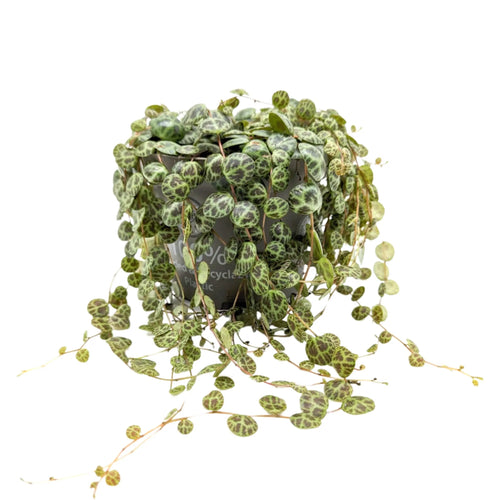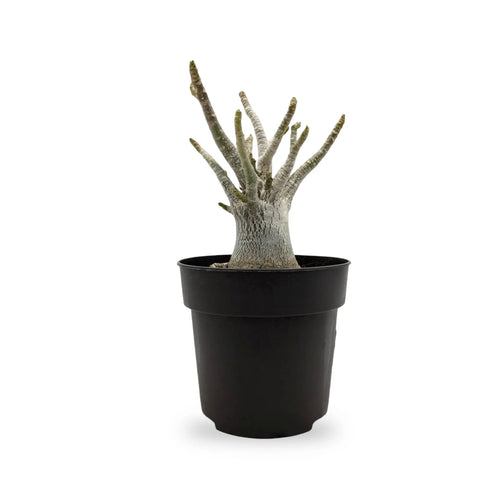Welcome to the world of indoor gardening in the UK, where the lush greenery of carefully chosen plants can transform your living space. In this comprehensive guide, you will go from selecting the perfect indoor plants to nurturing them for optimal growth. Begin by assessing your space, considering light conditions, available room, and the purpose of each plant.
Learn the art of selecting the right indoor plant pots in the UK — choosing materials, sizes, and styles that enhance aesthetics and functionality. Explore soil selection, proper planting techniques, and essential care practices, including watering, light exposure, and temperature considerations.
As you delve into the intricacies of each step, you'll discover the secrets to maintaining healthy, thriving indoor plants. So, whether you're a seasoned plant enthusiast or a budding green thumb, read on to unlock the secrets to creating an indoor oasis.
Selecting Indoor Plants
Choosing the right indoor plants involves carefully considering your space and lifestyle. Assess your home's light conditions, identifying areas with low, medium, or high light.
Opt for low-light plants like pothos, snake, or ZZ plants for spaces with minimal sunlight. For well-lit areas, consider succulents, aloe vera, or peace lilies. Beyond light, consider the purpose of each plant—some, like peace lilies and spider plants, excel at air purification, enhancing indoor air quality.
Selecting Indoor Plant Pots
The selection of indoor plant pots in the UK is an art that combines functionality and aesthetics. Ceramic pots retain moisture, making them suitable for plants with consistent soil moisture. Plastic pots, lightweight and budget-friendly, are practical for various plants.
Metal pots add a touch of elegance but can conduct heat, impacting soil temperature. When choosing the size, allow room for growth, preventing root-bound plants. Go for pots with drainage holes to prevent waterlogged soil, a common issue that can lead to root rot.
Soil Selection
The foundation of a healthy indoor garden lies in the soil. A well-draining potting mix is ideal for most indoor plants, ensuring that water moves freely through the soil while providing essential nutrients. For succulents and cacti, consider a mix with added sand or perlite to enhance drainage.
Tropical plants thrive in a peat-based mix and are accustomed to more organic matter. Regularly check the soil's moisture level to avoid overwatering, a common issue in indoor gardening.
Proper Planting
Proper planting techniques set the stage for a flourishing indoor garden. Begin by placing a layer of pebbles or broken terracotta pots at the bottom of the pot to facilitate drainage. Position the plant in the centre, ensuring it sits at the same depth as in its previous container. Add soil around the sides, gently pressing it down to eliminate air pockets. This technique provides stability and encourages healthy root development, leading your plants to success.
Watering
Watering is a delicate balance in indoor gardening. Establish a routine based on the specific needs of your plants, considering factors like the type of plant, its size, and the prevailing light and temperature conditions. Insert your finger into the soil; it's time to water if the top inch feels dry. You have to water your hanging planter indoor with special care.
Ensure your indoor plant pots have drainage holes to prevent water accumulation, as stagnant water can lead to root rot. Consistent, thorough watering supports healthy growth while avoiding waterlogged conditions.
Light Exposure
Understanding the sufficient light requirements of your indoor plants is crucial for their well-being. Low-light plants, such as snake plants and pothos, thrive in indirect sunlight and are suitable for spaces with limited natural light. Medium-light plants adapt well to moderate sunlight, including philodendrons and rubber plants.
High-light plants, like succulents and flowering varieties, need proper direct sunlight. Proper placement ensures each plant receives the appropriate light, promoting robust growth and vibrant foliage.
Temperature & Humidity
Be mindful of drafts, sudden temperature changes, and proximity to heating or cooling sources. Adjust humidity levels based on the plant's natural habitat; tropical plants may benefit from occasional misting, especially during the dry winter. Monitoring and maintaining a stable environment contribute to your indoor garden's overall health and resilience.
Fertilisation
Giving indoor plants the nutrition they need for healthy growth requires fertilisation. Usually, in the spring and summer, use a balanced liquid fertiliser during the growing season. Adhere to the dosage specified on the container since over-fertilisation may be damaging.
Consider the particular requirements of your plants; some might benefit from a little bit more nitrogen, while others—especially blooming plants—might need a fertiliser with more phosphorus. Regular feeding ensures your indoor garden remains lush and vibrant throughout the growing season.
Pruning
Pruning is both an art and a science in indoor gardening. Regularly inspect your plants for dead, yellowing, or diseased leaves, as these can drain energy from the plant. Use clean pruning shears to make precise cuts. Beyond removing damaged foliage, pruning can strategically shape your plants and encourage bushier growth.
Consider the natural growth habit of the plant and trim accordingly. For vining plants, such as pothos, pruning can also help control their size and create a fuller, more attractive appearance. Embrace pruning as a form of care and expression, allowing you to sculpt your indoor garden to your desired aesthetic.
Pest Control
Vigilance and preventive measures are essential to effective pest control in indoor gardening. Regularly inspect your plants, paying close attention to the undersides of leaves and areas where pests might hide. Common indoor pests include spider mites, aphids, mealybugs, and scale insects. Take quick action if you notice signs of infestation, such as discoloured or stippled leaves, webbing, or sticky residue.
Introduce natural predators like ladybugs or use insecticidal soap for mild infestations. For more severe cases, consider systemic insecticides, but exercise caution and follow product instructions.
The End Note
Cultivating a flourishing indoor garden is a rewarding journey that blends science and art. You'll create a vibrant and harmonious indoor oasis by carefully selecting the right plants, pots, and soil and mastering essential care practices such as watering, pruning, and pest control. Embrace the ongoing process of monitoring and adjusting to the unique needs of each plant.
Are you looking for a hanging planter indoor in the UK? If yes, then you should communicate with Leaf Culture. Browse our website and purchase quality indoor plants and pots anytime.









